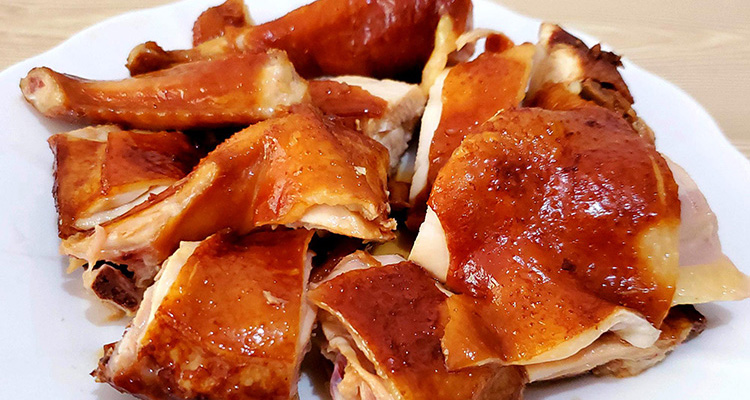Handan Ermao Braised Chicken: A Timeless Hebei Specialty
When the oiled paper slowly unfolds, a glistening amber-colored chicken appears, shimmering with fragrant oils. The aroma of more than ten spices fills the air — this is Ermao Braised Chicken, a century-old delicacy that captures the hearts of countless diners. Gently tear off a drumstick, and the tender meat naturally separates at your fingertips. Each bite blends the richness of the braised sauce with the juiciness of the chicken, as if echoing the hawking cries from the old streets of Handan.
1. Origin and History
Ermao Braised Chicken originated during the Jiaqing period of the Qing Dynasty, created by Wang Dexing from Handan. Because the founder was the second son of his family, nicknamed “Ermao,” the dish took his name. Initially a humble street food, its unique braising technique and delicious taste quickly made it one of Handan’s most iconic traditional dishes. For more than 200 years, it has remained a symbol of the city’s culinary heritage.
2. Cultural Significance
For Handan locals, Ermao Braised Chicken carries the flavor of festivals and family gatherings. During major holidays, every household prepares this dish to symbolize good fortune and prosperity. It reflects the evolution of Handan’s food culture and remains the taste that hometown travelers long for most when they are away.

3. Ingredients and Characteristics
Authentic Ermao Braised Chicken uses local free-range Lu-hua chickens, known for their firm and chewy texture. The braising sauce includes more than ten Chinese herbs such as goji berries and longan, but the soul of the dish lies in the century-old master stock— continuously replenished and reused for generations. Every spice is measured precisely; even the slightest variation affects the final flavor.
4. Cooking Process
The whole chicken is first marinated in a secret blend of seasonings for six hours, then slowly simmered in the aged master stock for two hours over medium heat. Throughout the process, the cook repeatedly ladles the broth over the chicken to ensure even absorption. Finally, it’s finished over high heat until the skin glows a deep amber color. The entire process requires constant attention and care from the chef.

5. Flavor and Texture
The chicken is juicy and tender, even in the thick breast meat. The first bite brings a burst of rich, aromatic braising flavor, followed by the natural sweetness of the chicken and a subtle herbal aftertaste. The most memorable part is the gelatinous chicken skin, infused with all the savory essence—soft, elastic, and melts in your mouth.
6. How to Eat
The most authentic way is to tear the chicken by hand, savoring the pleasure of feeling the tender meat come apart. Locals often pair it with a pot of strong tea to balance the richness. Another popular way is to shred the chicken and mix it with cucumber strips into a refreshing cold dish.

7. Where to Try
You can find the most authentic versions at “Ermao Braised Chicken Old Shop” (average ¥40–60) or “Wang’s Braised Chicken” (average ¥35–55). It’s best to order freshly cooked chicken and ask for it “cut into pieces” for the perfect experience.
8. Travel Tips
The English name for this dish is Handan Ermao Braised Chicken. It’s best eaten the same day, but it can be refrigerated for up to three days. Before eating, reheat it briefly by steaming to restore its aroma. The leftover braising sauce can also be used for stewing vegetables or mixing noodles — a delicious bonus from your meal.

9. Home-Style Easy Version
At home, you can substitute with Sanhuang chicken and use store-bought braising spice packs. Though it may lack the depth of the century-old master stock, proper timing and heat control will still produce a flavorful homemade version.
Come to Handan, a city with over three thousand years of history, and let this skillfully crafted braised chicken take you on a journey through time. When the rich aroma of the spices lingers on your lips and the tender chicken melts on your tongue, you’ll understand why this traditional delicacy remains a lasting pride of Handan — telling the city’s most flavorful and heartfelt story.


